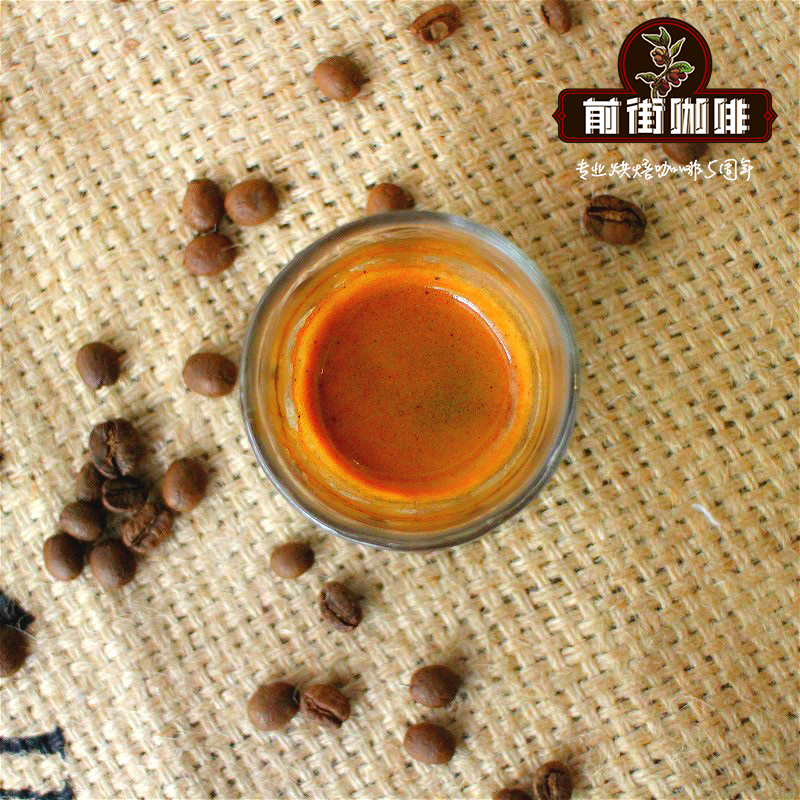Is the oil on espresso really that important?

Professional barista communication, please pay attention to coffee workshop (Weixin Official Accounts cafe_style)
Coffee beans, like other seeds such as corn and soybeans, contain oil. However, the oil on the surface of coffee beans is not the same as the oil on espresso coffee. The oil on the surface of coffee beans is a water-soluble organic substance that looks like grease; the "coffee oil" itself contains many coffee aroma components that can be dissolved in water. So your brewed coffee doesn't have a greasy surface.
After coffee is ground, aroma and oil begin to volatilize and release, and the brewed coffee flavor will gradually decrease with the release. Therefore, the presence of coffee oil is the easiest way to judge the quality of coffee.
The two most familiar coffees are Arabica, which is low in caffeine (0.8-1.4%) and has about 10% fat, and Robusta, which has 1.7-4% caffeine. Coffee contains 60% less oil than Arabica. Arabica is low in caffeine and has a high fat flavor, so it has become the first choice for gourmets.
Two reasons for "oil beans"
The oil content on the surface of coffee beans is generally affected by the roasting method.
1. stale light baked beans
The "light baked beans" with lighter roasting temperature and light brown appearance will dry out after roasting, and will not produce oil. About six days after roasting, the phenomenon of "dot oil"(a dot oil droplet appears on one side of the coffee bean) begins to appear. The slight "dot oil" does not mean that it is not fresh, but sometimes the flavor of the light baked coffee beans is at its peak. Continue to put it down, after more than two weeks out of the oven, the surface of the light baked beans gradually appears a layer of bright oil, at this time, the flavor of the "light baked beans" has begun to decline, should avoid buying or drinking as soon as possible.
In addition, there is a case where coffee beans are overdehydrated due to uneven heating during roasting. From the second day to the fifth day, the oil will also appear in a point-like manner, which is different from the oil on the overall surface of deep-cultured coffee.
In any case, if the light roast coffee beans appear in the above two cases, either that the roast is not good, or that the date is not fresh, it is not recommended to buy.
2. Fresh deep-baked beans
Deep baked beans with dark brown appearance appear slightly oily after baking, and a large amount of oil begins to appear on the surface from the second day to the fifth day. When coffee beans are deeply baked, they will produce oil due to high dehydration rate, so if the beans are deeply baked in the first one or two days of storage, it is normal to start surface oil.
The appearance of oily "dark baked beans" does not mean that they are not fresh. On the contrary, the appearance of dark baked beans will gradually dry out after three weeks of baking, and finally become dry and oily. Therefore, if you see coffee beans that are dry and not oily, but appear dark brown in appearance, please pay special attention to whether they indicate the baking date. It is very likely that they have deteriorated.
The appearance of oil is not an accurate way to judge the freshness of coffee beans.
Even if it is not fresh, the appearance of oil "light baked beans", in a long time (such as three months) after the appearance will gradually dry, and finally return to the appearance of dry oil. It can be seen that whether the appearance of oil is only a reference to judge the freshness of coffee beans, not absolute.
Extraction method affects oil content
An unroasted coffee bean is about 15% to 18% coffee oil, of which 80% oil is triglyceride, and cafestol and white fat (Kahweol) are the most important components of triglyceride in coffee, which is saturated fat. The American Heart Association does not recommend that adults drink too much, or else they increase their risk of heart disease.
However, we do not have to worry too much about the health problems brought by coffee, because although coffee beans themselves have oil, but the proportion of oil in coffee depends on the extraction method. Hand-brewed coffee has the lowest oil content because filter paper separates the oil. Hand-brewed coffee is more popular in Southeast Asia, such as Japan, Taiwan, etc., mainly because the water quality in these areas is soft (soft water); soft water can extract a richer coffee flavor, so even if the coffee oil is filtered, coffee still has enough flavor.
Due to the hard water quality in Europe and America, it is difficult to obtain the sweetness of coffee beans, so foreigners prefer French press coffee or espresso coffee, because it can extract a stronger coffee flavor, but at the same time these coffees contain a relatively high proportion of coffee oil.
Therefore, whether it is the oil on the surface of coffee beans or the oil in coffee, it will be affected by the method of roasting and extraction. There is no absolute difference between good and bad. For coffee lovers, it is just one of the reference pointers. Try different kinds of coffee, find your favorite coffee flavor, is more important!
Important Notice :
前街咖啡 FrontStreet Coffee has moved to new addredd:
FrontStreet Coffee Address: 315,Donghua East Road,GuangZhou
Tel:020 38364473
- Prev

Can drinking coffee help you lose weight? how many calories are there in a latte?
Communication of professional baristas Please pay attention to the coffee workshop (Wechat official account cafe_style) the habit of one cup of coffee a day has become one of the living habits of many people nowadays, and drinking moderate amount of pure coffee with extremely low calories not only has no burden on the body, but also can promote metabolism. But now the rise of many flavored coffee makes it full of sweet taste, and the calorie content is even closer to a bowl of white.
- Next

What does espresso have to do with SOE
Communication of professional baristas Please pay attention to the coffee workshop (Wechat official account cafe_style) the habit of one cup of coffee a day has become one of the living habits of many people nowadays, and drinking moderate amount of pure coffee with extremely low calories not only has no burden on the body, but also can promote metabolism. But now the rise of many flavored coffee makes it full of sweet taste, and the calorie content is even closer to a bowl of white.
Related
- How did the Salvadoran coffee industry develop in Central America?
- What exactly does the golden cup extraction of coffee mean?
- The Origin of Coffee flower
- [2023 Starbucks World Earth Day] there are more meaningful things besides free Starbucks coffee!
- What kind of coffee is there in Spain? 9 Flavors of Spanish Coffee
- Aromatic African coffee| Kenya's coffee culture and historical production area
- Liberica Coffee Bean knowledge: the characteristics of Liberian Coffee beans of the three original species of Coffee beans
- The origin and formula of Spanish latte introduces the taste characteristics of Bombon coffee in Valencia, Spain.
- How to adjust the solution of over-extracted coffee
- What is the tasting period of coffee beans? What is the period of coffee and beans? How should coffee wake up and raise beans?

